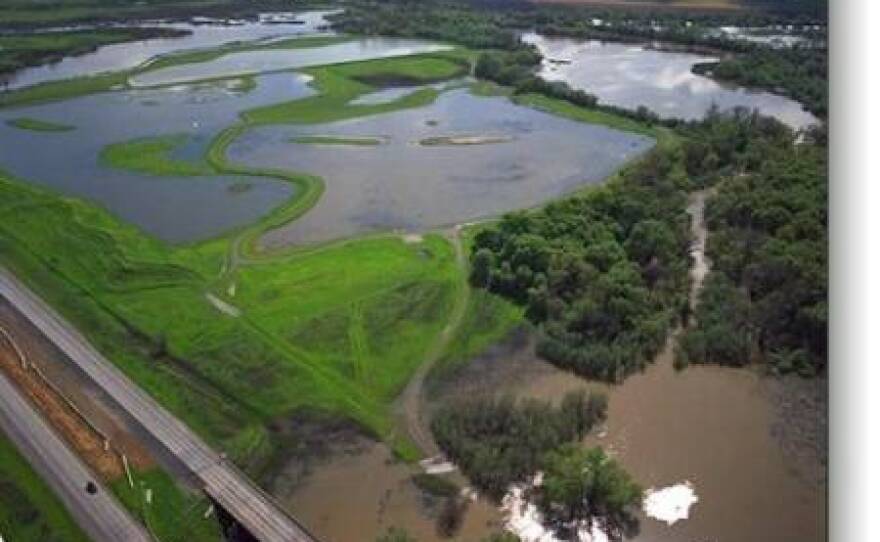California’s ambitious $24 billion plan for ending the state’s water wars was unveiled Wednesday, but standing in its way are unanswered questions and hurdles that will take years to surmount — if that’s even possible.
With fanfare, Gov. Jerry Brown and Interior Secretary Ken Salazar touted a massive twin-tunnel system to carry water from the Sacramento-San Joaquin River Delta to vast farmlands and thirsty cities. The proposal also includes plans for more than 100,000 acres of floodplain and tidal marsh habitat restoration.
“This plan is essential to stopping California water wars,” Salazar said about the long-running fight among competing regions for the essential resource.
But it seemed the plan only polarized Californians, including some of Brown’s fellow Democrats.
Delta residents, environmental groups and Northern California legislators said it calls for costly construction before scientists can determine the impacts on the fragile delta ecosystem, including its imperiled fish species such as salmon and smelt.
“There’s an effort to push this faster than the science allows and before the facts and evidence are developed,” said Rep. George Miller, D-Martinez.
During the announcement by Brown and Salazar, dozens of opponents gathered on the Capitol steps with signs reading “kill the canal” and “the tunnel will suck California dry.”
Brown said the tunnels would guarantee a stable water supply for California while being able to withstand earthquakes and other environmental threats. Construction alone would cost $14 billion and would be financed by water users.
“A healthy delta ecosystem and a reliable water supply are profoundly important to California’s future,” Brown said. “We know there are a couple big issues — earthquakes and climate change. And this facility is absolutely essential to deal with both of them.”
Still, officials acknowledged they could not guarantee that they could fully balance the needs of water users against those of the ailing delta ecosystem.
Officials said an environmental impact report on the proposal would begin in the fall. And scientific studies will accompany construction over the next 10-15 years. Construction could start in two to three years.
The biggest question — how much water would be pumped — would not be answered until the tunnels had been built and the health of species is reaccessed.
“If simply rebuilding habitat is not going to be an adequate strategy, then we may have to reduce exports” of water from the delta, said Will Stelle of the National Oceanic and Atmospheric Administration’s National Marine Fisheries Service. “There are not guarantees with this that we are absolutely sure it will work.”
Another unknown is where the $10 billion for habitat restoration would come from. Officials said taxpayers would bear that cost, but a water bond that could provide some money for restoration was moved for the second time and is now set for the November 2014 ballot.
The delta, an inland estuary where hundreds of species live, is the hub of California’s water delivery system. The Sacramento and San Joaquin rivers drain into the delta, and the state and federal governments run massive pumps that siphon drinking and irrigation water for use by more than 25 million Californians and by farms in the Central Valley that produce half the nation’s fruits and vegetables.
The current distribution system falls short of providing all the water needed by cities and farms. Supply was tightened even more a decade ago when major declines in the once-abundant fish populations spurred regulations that curtailed delta pumping and water deliveries.
Farmers and urban water users have long called for a new water system, but Brown faced stiff opposition in 1982 when he proposed a peripheral canal during his previous time as governor that would carry water around the delta. Voters rejected that plan, branding it a water grab by Southern California cities.
The current proposal — two tunnels, each larger than 33 feet in diameter — would have the capacity to divert about 67,500 gallons of water a second, a pace that would fill six Olympic-sized swimming pools every minute.
Officials said they want to build it even larger to help water move by force of gravity, reducing energy use and costs.
The tunnels would change the point of water diversion from the south end of the delta to the north end below Freeport. That could lessen the impact of giant pumps now blamed for killing massive numbers of salmon, sturgeon and other species, officials said.
Once water reaches a pumping station in Tracy, it would be ferried through existing canals to farms in the Central Valley and cities such as Los Angeles and San Diego.
Most environmental groups said there simply weren’t enough details in the plan to judge it.
“There is very little there yet. They have not made critical decisions on how to operate the facility, how much water to take out, and that’s the $24 billion question,” said Kate Poole, a senior attorney with the Natural Resources Defense Council.
Because of those uncertainties, it was premature to announce the project size, Poole said.
But, she added that she was heartened that officials are now focused on restoring the delta first then figuring out how much water would be safe to divert. Any final project should include strict guarantees for the health of the ecosystem, she said.
The lack of certainty about the amount of water to be pumped through the tunnels was also of concern to water agencies that would pay for construction.
“I don’t know with any certainty how much water this will produce, but what worries me much more is doing nothing,” said Tom Birmingham, general manager of Westlands Water District. “What’s absolutely certain is that if we do nothing, the delta environment will continue to deteriorate and the water supply for millions of people and millions of acres of farmland will continue to diminish.”
He added, “We have to implement this project to avert a future catastrophe.”






